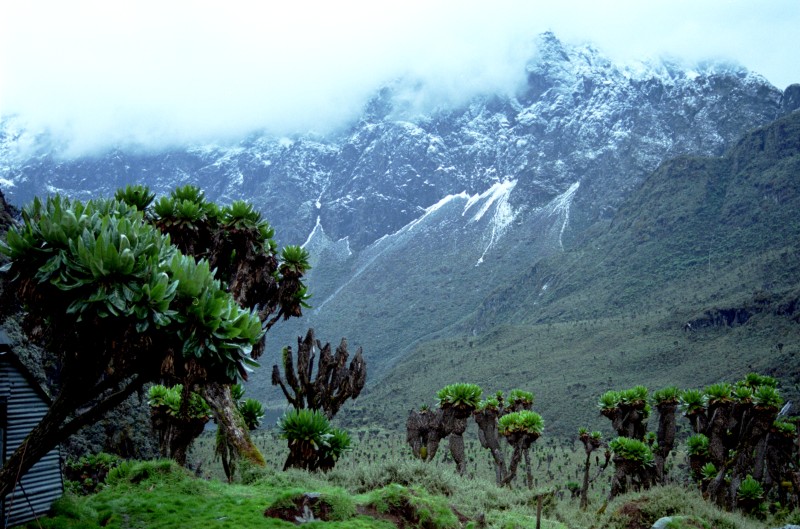I should never have taken up mountaineering, mainly because I was so bad at it. I’ve lost count of the crags and cliffs I’ve fallen off, but remember the avalanches I’ve been in and the occasional long drop, such as falling headfirst down a Scottish gully after getting to within 10 metres of the top. Some 200m later, I was dazed and confused at the bottom, with only a dodgy knee and a deep scar where my ice axe had impaled itself.
Life Into Perspective
It’s these precious moments that, as a friend said, “puts life into perspective”. But in 1990, I was a young climber in the English Lake District, who had been all over the local rocks, started snow and ice climbing in Scotland and was taking the next step. I was progressing to the French and Swiss Alps. There were a couple of problems. One was that I had a healthy concern for my own well-being that expressed itself as a wish to stay alive. This is a barrier to the heights of mountain climbing. Secondly, I was more interested in doing something different.
After a weekend’s ice climbing, I was staying with a friend, who was a Himalayan expert. Our conversation moved on to the commercialization of mountaineering and that it was harder to do any exploration. As I headed off to bed, I picked up a small guidebook to read, on the Ruwenzori mountains of Uganda.
Published in 1972, it was recognized as a small but insanely complete guide to the 150-kilometre range on the Congo/Uganda border. These fabled mist covered mountains have fascinated travellers for millennia. Around 500 BC, the Greek poet Aeschylus wrote of “Egypt nurtured by the snows”. Not to be outdone, Aristotle, some 150 years later, declared the source of the Nile to be “The Silver Mountain”.
An account of a journey to the Ruwenzori was written by the Syrian geographer Marinus of Tyre in 120 AD. He related the tale of an Ancient Greek merchant, Diogenes, who claimed a 25 day journey inland from the African East coast to “two great lakes and the snowy range of mountains where the Nile draws its twin sources”. Three decades afterwards, Ptolmey wrote of the Lunæs Montes (Mountains of the Moon) being the source of the Nile.
Gordon Bennett!
The mystery began to clear after the mountains were sighted in the far distance by the British explorer Henry Morton Stanley in 1876. He took a brief respite from savagely beating his porters to name them after his boss, the editor of the New York Herald, Gordon Bennett, whose lifestyle and editorial flair turned his name into a slang term for ‘I don’t believe it’. Sadly, the 5,107m main summit has been renamed Mount Stanley.
The more I read, the more intrigued I was. However, looking at the remoteness and other factors, such as a conflict going on in the area, I realized this was a journey I was never going to make. Then I stopped. Why would I never go there? What was stopping me? I then acknowledged that the main thing stopping me was . . . myself. So I decided to go. To make the trip happen, there were several steps I had to take, so I tackled them.
Friends Indeed
Finding a climbing partner was easy. I take pride that many of my friends were up for climbing through a jungle to scramble over glaciers on the equator. The biggest issue was information. The guidebook had been out of print for many years, but I tracked down a second hand copy from the original publisher, who only sold me the book after I had assured him that I was actually going there.
Maps were more difficult. I found a 1:150,000 map, that seemed to be alarmingly vague. Money was another problem, so we booked the cheapest flight to Nairobi, jumped on a bus to the Ugandan border, then another to Kampala and one more to Kasese in the foothills of the mountains.
The warm and misty atmosphere also meant that anything living grew to outlandish size. Earthworms were 3 or 4 centimetres thick and the heather grew to the size of trees. As we entered the heart of the high peaks, we were already higher than Mont Blanc, but we were still having to cut our way through jungle.
It was a hard trek into the Bigo bog, under the main summits. This is why the range is also known as the ‘Mountains of the Mist’, and the bog turned out to be very big indeed. We spent days jumping from tuft to tuft to make progress. Eventually we got on the rocky slopes and then to the glacier, where we climbed above the mist to the summit. Since then, I’ve never told myself that I can’t do something. I’m also going to return to the Ruwenzori. I’ve had an idea for a journey that has never been done. Want to come along?







